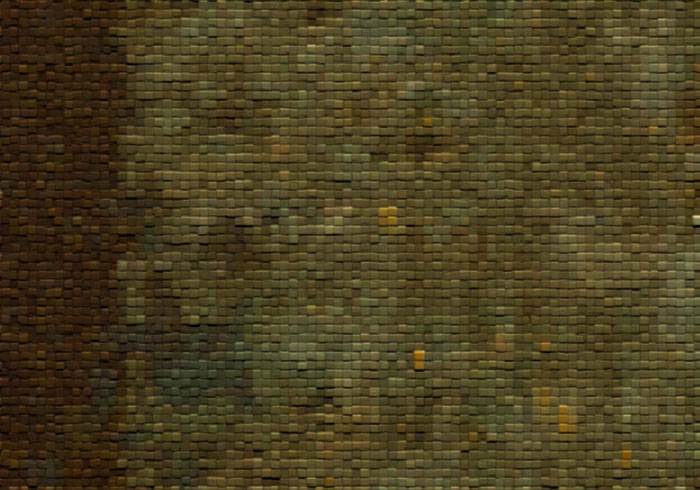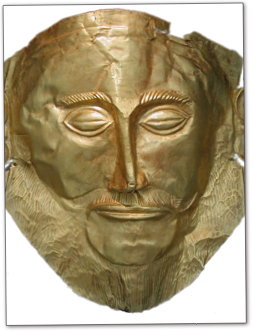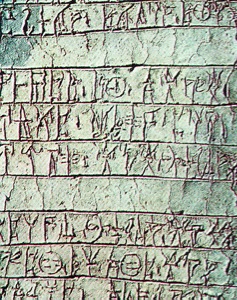



Bronze Age Mycenae was built on a hilltop. It was continuously occupied and improved upon from about 2000 B.C. until 1200 B.C. It was a walled fortress with a large palace and some smaller buildings inside the walls. Unlike Knossos, the Minoan city on the island of Crete, Mycenae was never a city. most of the populace lived in outlying agricultural villages and worked the land. Mycenae was built to house and protect the king – wanax – and his administrators and craftsmen. It was a heavily fortified center of government. Adjacent to the fortress was a cemetery where many beautiful artifacts were uncovered.

In 1939, a group of archaeologists using hints from the Odyssey found a second center of Mycenaean culture – Pylos. As they dug into the ruins they began to find bits of clay tablets upon which there was a previously unknown kind of writing – Linear B. In all, some 600 complete tablets were found at Pylos. These tablets remained undeciphered until 1954 when a young British archaeologist named Michael Ventris discovered that Linear B was a form of the Greek language.
Once translated, these 600 tablets began to give us some idea of what the Mycenaean culture was like. There were several city-states on the mainland of Greece. Each of these was a center of government for a sizable (larger than any classical Greek state) territory. Each state was ruled by a king (wanax). In turn, each king’s holdings were administered over by a complicated hierarchy of servants who saw to it that the local taxes were paid, organized and trained the military, and organized the populace (damos) when necessary.





Top: So-Called Death Mask of Agamemnon
Left: Mycenaean pot
Above: Lion’s Gate at the citadel of Mycenae
Below: Linear B tablet from Pylos


The Mycenaean culture flourished until about 1200 B.C. At this time, new settlements and burial patterns became established all over the Aegean – especially in Greece. Bronze Age tools began to be replaced with iron technology. Finally the traits of the Mycenaean culture that had dominated Greece for so long vanished altogether. The Greeks of classical times thought that a new group of Greek-speaking peoples – the Dorians – arrived at that time and forcefully replaced the Mycenaeans as masters of Greece. Mycenaean culture essentially fell prey to the catastrophic destruction that marks the period around 1200 B.C. – the end of the Bronze Age – in the Eastern Mediterranean.
